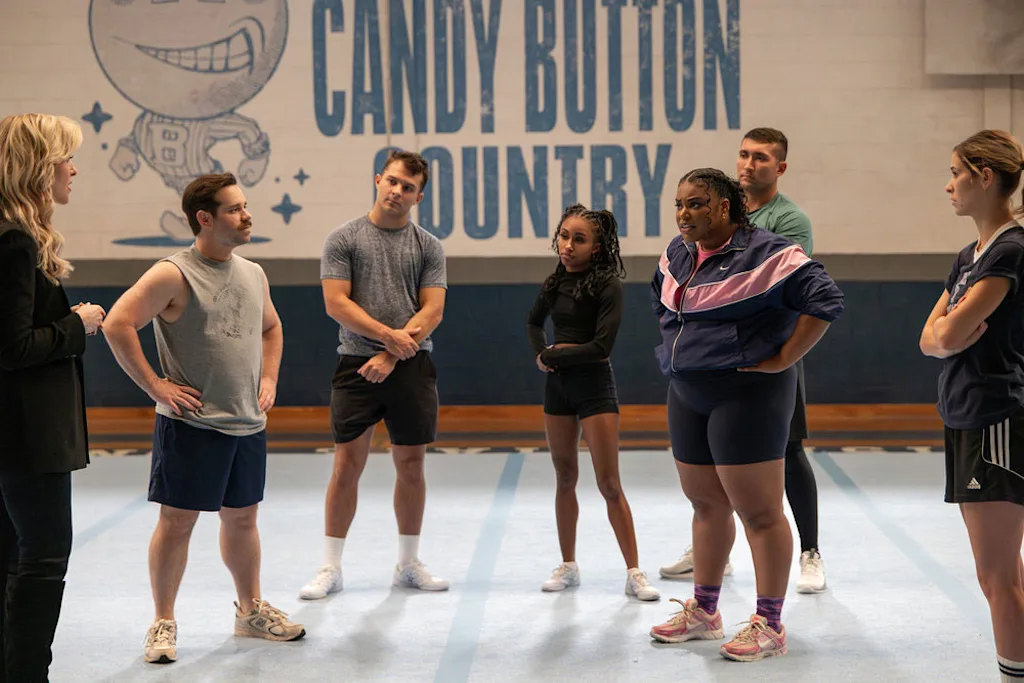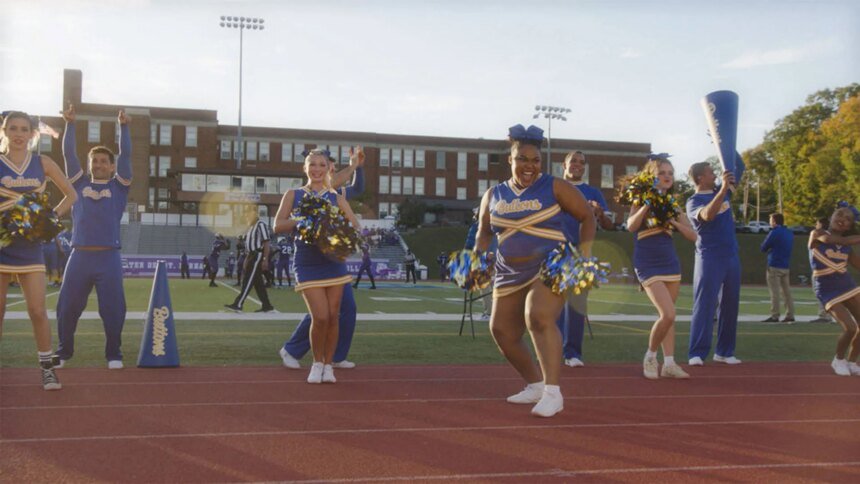NBC recently debuted a new show: Stumble, a comedy about a former cheer coach leading a team of misfits.
Some earlier reviews of the show, which premiered on November 7, called it “hilarious” and “full of sharp writing.” But the new sitcom, starring Kristin Chenoweth, Jenn Lyon, and Taran Killam, has audiences chuckling at more than just cheer squad antics. It also makes narcolepsy, a serious neurological disorder, into a recurring joke.
Narcolepsy, a chronic condition that can lead to major challenges for sufferers, takes center stage in the show as a character named Madonna (Arianna Davis) has the condition. Due to the disorder, Madonna collapses without warning, sometimes even mid-routine, casting her as a talented-yet-awkward misfit due to the illness.
The dramatic and tough-to-miss depiction may be similar to what many who know little about the condition believe it looks like.
Per Johns Hopkins Medicine, a person with narcolepsy may experience symptoms like excessive daytime sleepiness, sleep paralysis, disrupted sleep, and sometimes, cataplexy (sudden muscle weakness). It can also lead to memory loss, difficulty concentrating, and depression.
But according to experts, it doesn’t look at all the way it often is depicted onscreen—and that’s problematic for a number of reasons, they say.

Julie Flygare, the founder of Project Sleep, is a leading narcolepsy spokesperson and award-winning author who also has been diagnosed with the condition. In an online petition to NBC, Flygare wrote that narcolepsy is not what Hollywood so often makes it out to be.
“In reality, during an episode of sleepiness, a person with narcolepsy feels sleepy, has an urge to sleep, similar to an urge to use the bathroom,” Flygare wrote. “This sensation of sleepiness generally allows individuals some amount of time (from several to 30 minutes) to find a place to nap. Even in extreme moments, a person with narcolepsy would lay down, sit down, or support their head and body to avoid injury.”
While the moments when Madonna collapses onscreen make for a laugh-out-lough character quirk, Flygare tells Fast Company that those very inaccurate depictions of neurological conditions can be dangerous, given they can lead to delays in real diagnoses, “by showing someone experiencing symptoms that are so other-worldly or not biologically possible.”
Flygare says that depiction is part of the reason why it can take around eight to 15 years to get an accurate diagnosis.
A missed opportunity for Hollywood
As a person with narcolepsy, Flygare says NBC is missing an opportunity to show people what the condition actually looks like.
“I believe Hollywood is our biggest public health educator, yet it’s not a role they always seem to want to take on,” says Flygare. “If you’re going to use a real condition name that impacts 200,000 Americans and 3 million people worldwide (including many children), I think it’s important to do your homework and work with medical experts and leading community groups.”
That’s why Flygare’s petition calls on NBC to take a few steps to do better, like collaborating with the narcolepsy community to represent the real symptoms of narcolepsy, and even provide educational resources for viewers.
Fast Company reached out to NBC to ask if it had seen the petition or had plans to address the concerns, but did not hear back by the time of publication.
Flygare says that knowledge is massively important when it comes to living a productive life with the condition. According to the online petition, “Once diagnosed, people with narcolepsy manage their symptoms with medical treatments, lifestyle adjustments, naps, and social support.” But currently, she says, widespread misconceptions promoted in the mainstream can—and do—stand in the way.
The final deadline for Fast Company’s World Changing Ideas Awards is Friday, December 12, at 11:59 p.m. PT. Apply today.







